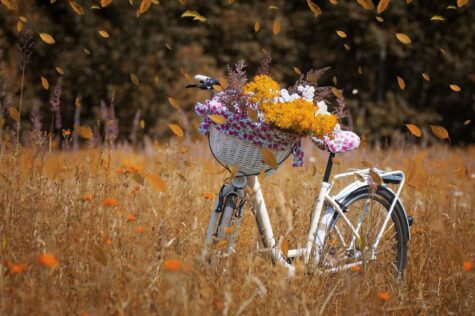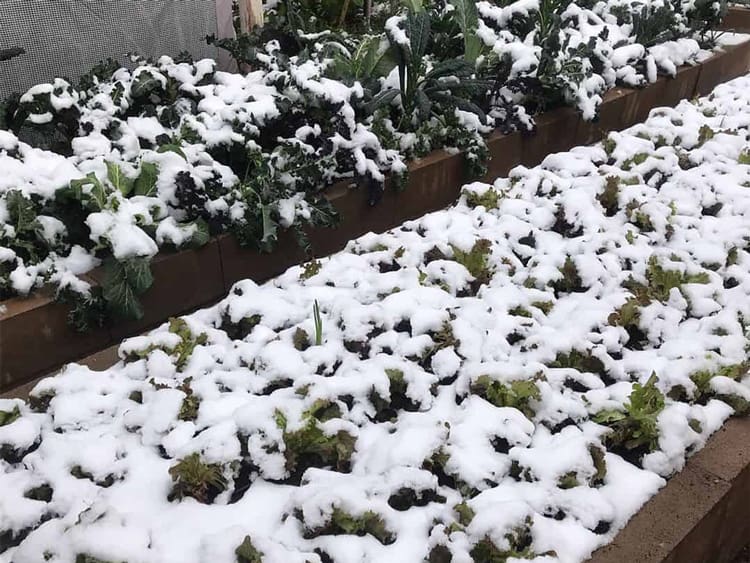Are you passionate about saving bees? Then this article is for you. Bees need a source of food even in the harshest of months. Although honeybees huddle together for warmth in the hive and feed on their own supply of honey during winter, some will venture out on warmer autumn and winter days to find fresh nectar. To help these endangered insects and make your garden more colourful in the process, try planting flowers for every season.
In this article, we’ll look at the perfect bee-friendly flowering plants for an autumn garden.

Credit: Pixabay
How to help bees survive
Bees are quickly becoming endangered all over the world. If this matters to you, you can create a bee-friendly garden to help these essential insects. Now you might be wondering how exactly to achieve this goal… Here are a few quick tips:
1. Plant fall flowers that bees enjoy
Flowers will be the main attractant for bees. If you don’t have any bee-friendly plants, you might never see these insects around. In the list below, you’ll find a few flowers that will support bees in autumn.
2. Put up a bee box
Bees also need somewhere to live and raise their young. If you’re allowed, put up a bee box in an isolated spot in your garden. In spring when the bees are swarming you can put attractants in the box to encourage them to start living there. This way you’ll permanently have bees in your garden and you might even get a bit of honey out of it.
3. Add plants that flower at different times of the year
It’s best to support the bees during every season. You can plan your garden in such a way that there’s always a flowering plant somewhere. You shouldn’t have a problem finding plants that flower in spring and summer but autumn and winter might be a bit more tricky.
In the list below, you’ll find a few flowers that will help save the bees in autumn. Also, check out our article on winter flowering plants for some ideas for the bees during this harsh season.
4. Put out honey, sugar water or bee food
To further help the bees, you can put out a tiny container with honey, sugar water or bee food in it. You can buy bee food online or from any beekeeping shop. These will help the bees to survive harsh months in autumn and winter when few plants are in flower.
5. Avoid pesticides in your garden
One of the worst things you can do for a bee-friendly garden is spray pesticides. These will not only kill the targeted pests but also the bees you’re trying to save. If you have a problem with pests, try some homemade natural remedies instead.
6. Encourage the neighbours to participate
If you want to bring bees to your garden, encourage your neighbours to accommodate these helpful insects too and create a bee-friendly neighbourhood. Every little bit helps to save these important pollinators.
As an added bonus, you’ll also see other pollinators like butterflies arriving. These in turn will attract more birds to your garden. Overall, it’s a win-win situation for everyone.
Best bee-friendly autumn flowering plants
If you’re not sure which flowers will work in an autumn bee-friendly garden, consider the following options below.
1. Asters
Asters are particularly good for attracting pollinators such as bees and butterflies to your garden. There are many varieties of asters, however, so make sure to choose one that flowers in autumn.
These flowers will provide bees and other pollinators with a source of pollen and nectar which is vital to their survival. If you want to help these insects, plant some asters to help them out.
Fortunately, asters are very versatile. You can use them as borders between garden beds, plant them in rock gardens or even add them to your wildflower bed. The options are almost limitless as long as you choose the correct variety for your needs and research their care beforehand.

Credit: Pixabay
2. Snowdrops
Snowdrops are an excellent late winter and early spring source of food for pollinators such as bees. There are many varieties of snowdrops, however, so make sure to choose a variety that flowers in autumn. Most snowdrops are known to flower from mid-winter through spring, but by doing some research, you’ll be able to find one that flowers much earlier.
These flowers look stunning in an otherwise red autumn garden. They will lure honeybees to your property and offer them a much-needed source of food. By planting these flowers, you’ll be helping the honey bee survive winter.

By Ian Kirk from Broadstone, Dorset, UK – The bees are out! Uploaded by tm, CC BY 2.0
3. Hellebores
Hellebores aren’t normally autumn flowering plants, but there are a few varieties that will bless your garden with some colour in this transitional season. You will have to do some serious research, however, to make sure you choose the correct variety.
Bees love this plant and will be attracted to your garden if you have these beauties around. If your goal is to help the bees, you definitely can’t go wrong here. These plants will also help the bees during other seasons.

Credit: Pxhere
4. Anemone
Anemones are a great addition to any garden that favours and supports pollinators like bees and butterflies. They tend to flower from late summer all the way through autumn and will bathe your garden in stunning colours.
Anemones are an excellent source of pollen and nectar and bees just can’t get enough of them.

Credit: Pixabay
5. Heleniums
Helenium is great for a bee-friendly garden in late autumn. This perennial look great paired with grasses, but you can plant it alongside just about anything. This plant is also very popular as cut flowers and great at attracting wildlife.
Once the flowers start to die, cut them back. This will extend flowering and help out the bees for longer.

Credit: Maxpixel
6. Sedum
Sedums produce stunning flowers that bees can’t resist. They will flock to this plant as soon as it’s discovered for its pollen and nectar. You can happily add this addition to your garden if you’re going the bee-friendly route. You will definitely help the pollinators to prepare for winter.
Besides being a great source of food for insects, it also looks great. This plant will bring a last bit of life to your dying garden as it prepares for winter.

Credit: Pixabay
7. Crocuses
There are several kinds of crocuses, most don’t flower in autumn. If you want one for your autumn garden, you’ll need to do some research. There definitely are crocuses that prefer to flower at this time of year.
Bees will also adore you for putting in the effort to find an autumn crocus. They love this plant and need it to prepare for surviving winter. The crocus that blooms in autumn isn’t their favourite, however, so it would be better to go for the spring variety if you can.

Credit: Pixabay
8. Sunflowers
Sunflowers will always brighten up any garden. There are a few different varieties of different sizes. These flowers are excellent for gardens that encourage bee activity. They have plenty of pollen and nectar for pollinators. The seeds can also be dried and placed out for birds once winter really hits.
You can use these flowers as dividers between beds, to create some shade for shade-loving plants or just as a background plant to cover up a fence or wall.

Credit: Pixabay
9. Honeysuckle
Most varieties of honeysuckle bloom in spring. Fortunately, there are a few varieties that will flower through summer into autumn. These are the ones you’re looking to add to your bee-friendly autumn garden.
More on this: Which Trellis For Honeysuckle?
This plant has highly fragrant blooms that will attract bees to your garden in no time. You can also place a beehive near this plant for bees to stay in your garden permanently.

By Zeynel Cebeci – Own work, via Wiki CC BY-SA 4.0,
10. Echinaceas
Echinaceas, also known as coneflowers, resemble purple daisies. The centre of the cone is made up of multiple florets that contain pollen and nectar. This is the part of the flower that attract bees and other pollinators.
These flowers grow best in an area with well-drained soil and full sun exposure. You can expect them to flower from around mid-summer to early autumn.

Credit: Pxhere
Final thoughts
Now that you know a bit more about which flowers will work in an autumn garden, it’s time to go shopping. Ask the local authorities if you’re allowed to keep a bee box in your garden before you get one.
Thank you for helping the bees! Have fun planting!
FAQs
What flowers do bees like in autumn?
Bees like flowers that offer them something like pollen or nectar. Some flowers you can consider are asters, sunflowers, ecinaceas, honeysuckle, snowdrops and crocuses.
What can I plant in autumn for pollinators?
If you want to help the bees, consider planting flowers with lots of pollen such as sunflowers, honeysuckle, echineceas, asters, sedum and heleniums.
What flowers attract bees in the winter?
Any plants that flower in winter will attract bees. Some of the best plants for bees in winter are snowdrops, alyssum and marigolds.
You Might Also Like: 7 Vivid Winter Flowering Climbing Plants

Save this pin for later






